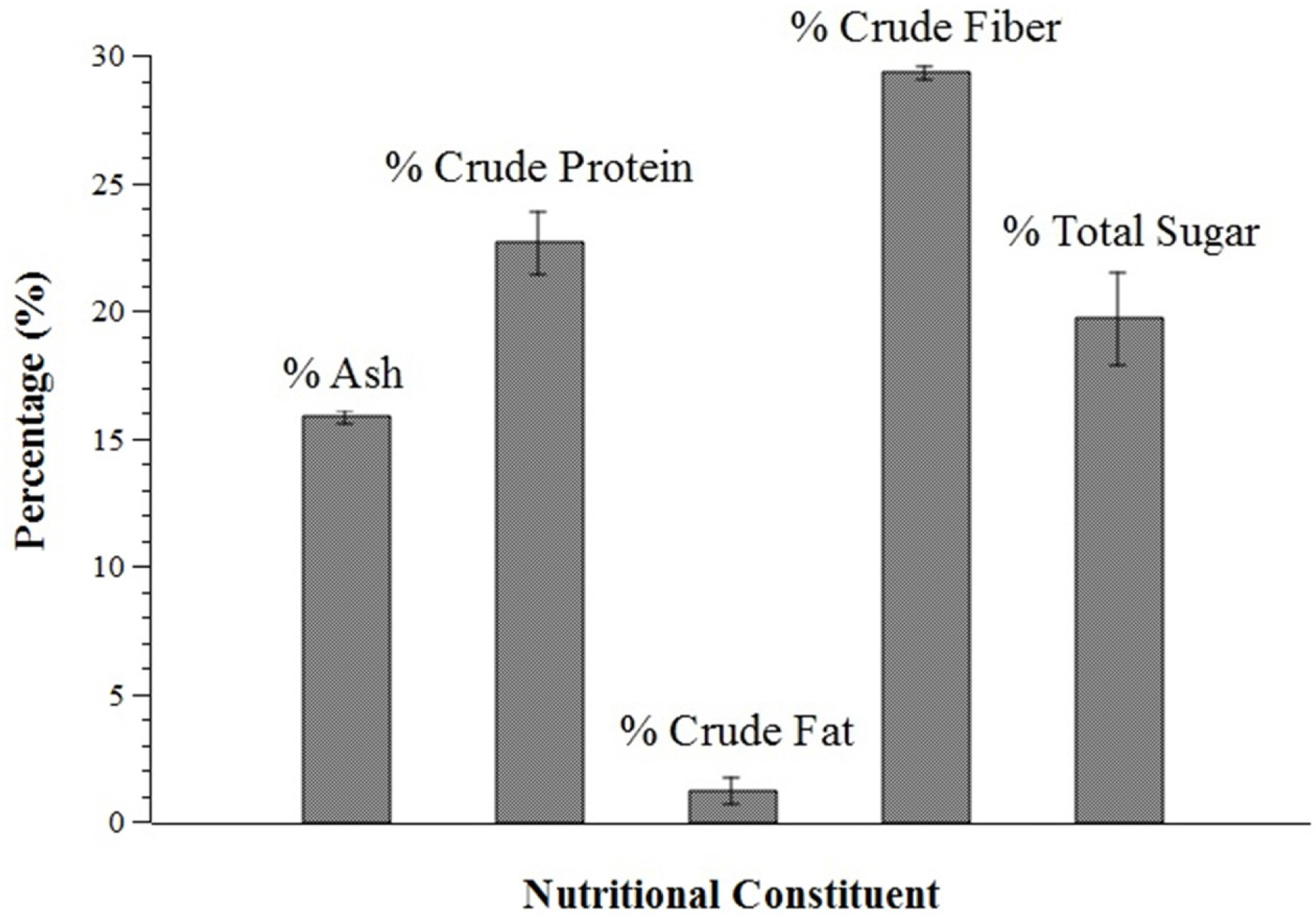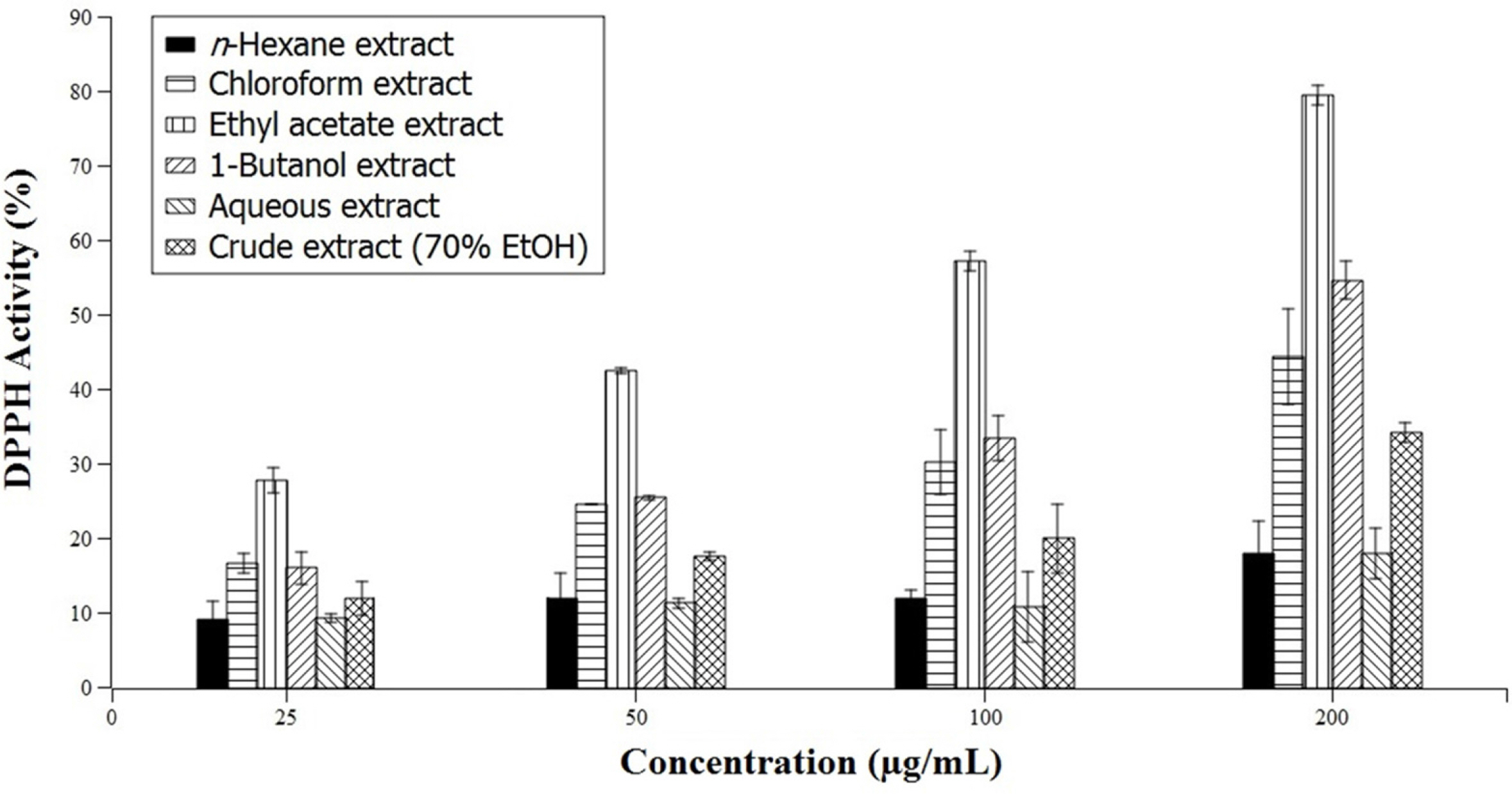Nat Prod Sci.
2016 Mar;22(1):60-63. 10.20307/nps.2016.22.1.60.
Mineral, Nutritional, and Phytochemical Profile, Total Phenolic Content, and Radical Scavenging Activity of Philippine Bamboo "Bolo" Gigantochloa levis (Blanco) Merr. Leaves
- Affiliations
-
- 1Department of Forest Products and Paper Science, College of Forestry and Natural Resources, University of the Philippines Los Baños, College, Laguna, 4031, Republic of the Philippines. jvvtongco@uplb.edu.ph
- 2Institute of Chemistry, College of Arts and Sciences, University of the Philippines Los Baños, College, Laguna, 4031, Republic of the Philippines.
- 3Department of Wood Science and Technology, College of Agriculture and Life Sciences, Chonbuk National University, Jeonju,561-756, Republic of Korea. msp@jbnu.ac.kr
- KMID: 2312923
- DOI: http://doi.org/10.20307/nps.2016.22.1.60
Abstract
- The study is a pioneering effort to determine the mineral, nutritional, and phytochemical composition and phenolic content and to determine the free radical scavenging activity of Gigantochloa levis (Blanco) Merr, a native bamboo species (locally known as "bolo") in the Philippines. Proximate analysis showed that air-dried G. levis leaves contain 15.8% ash, 22.6% crude protein, 1.2% crude fat, 29.3% crude fiber, and 19.7% total sugar. Phytochemical tests indicated the presence of diterpenes, triterpenes, saponins, phenols, tannins, and flavonoids in both the ethanolic and aqueous leaf extracts, while phytosterols were only detected in the ethanolic extract. Folin-Ciocalteu assay determined the total phenolic content in gallic acid equivalents (GAE) to be 85.86 ± 3.71 and 32.32 ± 1.01 mg GAE/100 g dried sample for the ethanolic and aqueous extracts, respectively. The total phenolic content in quercetin equivalents (QE) was 74.44 ± 3.11 and 29.43 ± 0.85 mg QE/100g dried sample for the ethanolic and aqueous extracts, respectively. The radical scavenging activity of the different solvent fractions containing varying concentrations of the extract was determined using the 2, 2-diphenyl-1-picrylhydrazyl (DPPH) assay. The ethyl acetate and 1-butanol fractions were found to have the highest radical scavenging activity. Mineral analysis via Energy Dispersive X-Ray Spectrometry (EDS) of the ash of G. levis leaves showed that Si is the major component, followed by K and Mg. These results point to the potential of G. levis leaves as a source of minerals and bioactive compounds with medicinal value.
Keyword
MeSH Terms
Figure
Reference
-
(1). Chongtham N., Bisht M. S., Haorongbam S.Compr. Rev. Food Sci. F. 2011; 10:153–168.(2). Wang J., Yue Y. D., Tang F., Sun J.Molecules. 2012; 17:12297–12311.(3). Keski-Saari S., Ossipov V., Julkunen-Tiitto R., Jia J., Danell K., Veteli T., Guiquan Z., Yaowu X., Niemel P.Biochem. Syst. Ecol. 2008; 36:758–765.(4). Scurlock J. M. O., Dayton D. C., Hames B.Bamboo; an overlooked biomass resource; Oak Ridge National Laboratory: Oak Ridge, Tennessee. 2000; 34.(5). Cunniff P., Horwitz W.Official Methods of Analysis of AOAC International. 16th ed.AOAC International;Gaithersburg: 1995.(6). Harborne J. B.Phytochemical methods: A guide to modern techniques of plant analysis (3rd ed.); Chapman and Hall: New York, USA. 1998; 279.(7). Tiwari P., Kumar B., Kaur M., Kaur G., Kaur H.Internationale Pharmaceutica Sciencia. 2011; 1:98–106.(8). Tongco J. V. V., Aguda R. M., Razal R. A. J.Chem. Pharm. Res. 2014; 6:709–713.(9). Ragazzi E., Veronese G. J.Chromatogr. 1973; 77:369–375.(10). Burda S., Oleszek W. J.Agric. Food Chem. 2001; 49:2774–2779.(11). Owokotomo I. A., Owoeye G. Afr. J.Agric. Res. 2011; 6:5030–5032.
Article(12). Oke O. L.Food Chem. 1980; 6:97–109.(13). Supriyatin R. S., Sukmawati D.Asian J. Microbiol. Biotech. Env. Sci. 2015; 17:443–450.
- Full Text Links
- Actions
-
Cited
- CITED
-
- Close
- Share
- Similar articles
-
- Total Phenolic Content and Antioxidant Activities of Leaves and Bark Extract of Adenanthera pavonina L.
- Antioxidant activities and determination of phenolic compounds isolated from oriental plums (Soldam, Oishiwase and Formosa)
- Antioxidant Activity and Phenolic Content of Different Parts of Lotus and Optimization of Extraction Condition using Response Surface Methodology
- Physicochemical properties of dried Saururus chinensis and the antioxidative activities of water and 70% ethanol extracts
- The antioxidant and cytotoxic activities of Sonchus oleraceus L. extracts



